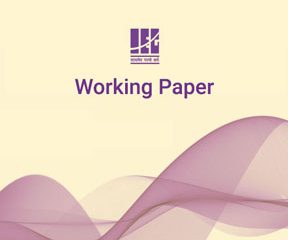
Agglomeration Economies and Rural to Urban Migration: A District Level Study Based on 2011 Census Data
Working Paper No- 431
Keeping in view the concept of agglomeration economies and the New Economic Geography (NEG) angle, this paper makes an attempt to examine the rural to urban population movement at the district level in India. The findings tend to confirm that higher levels of urbanisation and higher migration rates are not strongly associated. Nevertheless, there exists a cluster of districts which are able to attract migrants on a large scale in spite of being already urbanised. The work participation rate, share of services and construction work, and literacy rate all form parts of this positive nexus, indicating that opportunities exist with increased levels of urbanisation which prompt people to migrate. The positive spill-over effects of higher levels of urbanisation are not limited to the urban spaces only as the adjoining rural areas are also indicative of a significant transformation process. The land use pattern and activities seem to be changing and some of the developmental impact is evident. However, having concluded with a positive note it is important to mention that the regional variations in this respect bring out sharp differences in the relationship between urbanisation level and migration rates, determinants of the nature of urbanisation and also, the outcome variables of urbanisation and migration. There are many districts with higher levels of urbanisation; yet, they are not able to attract migrants at a rapid pace. New investment opportunities are to be created in these space to reduce the cost of growth and make employment creation more effective, facilitating the rural population to take the benefits of agglomeration economies.
Find on this page
Contact Us
Institute of Economic Growth, University Enclave, University of Delhi (North Campus),
Delhi 110 007, India
contact-us@iegindia.org
+91-11-27666364/6367, 27667101/7288/7365/7424
+91-11-27667410



